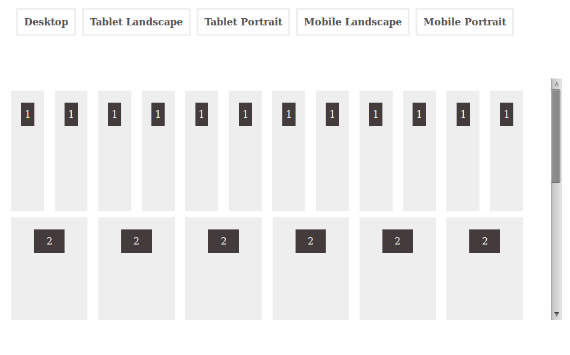
Custom-designed products are definitely a rising trend, and for an eCommerce business owner like you, coping with the latest trends and coming up with ideas to sell products is the best approach to success. Our world is largely concerned with social media, and what new gossips are in the flow; who won what, who did what, what’s the new fashion, or how to remain up-to-date with the latest news are the things to be aware of.
A large part of the world’s population uses social media, and that’s why it’s smart to promote yourself and stay engaged with the latest trends. Everyone loves customized products, and there are several sellers who are already familiar with that, but how you can get ahead of them is the question that we’re about to answer now.
Why Sell Custom Products?
Table of Contents
Yes, there are other ideas to follow, but what’s so special about selling custom products? If you wish to stand out in the e-commerce market as a small or medium-scale business, then customization is the way to do it.
49% of Americans are interested in purchasing custom products; furthermore, 51% of them prefer buying customized clothing online. People prefer customization for many reasons, including the demonstration of their creative choices, to display their interests and knowledge of trends, or the will to be unique among a large crowd.
Conclusively, there’s a huge number of people who will be your valuable customers. This percentage is increasing with every passing year, so you can say customization is the future.
What is The Best Business Model For Custom Product Creation?
Although this is a vast category, not every business model for custom product creation is worth the effort. But, if you wish to stick to just one model, it should be POD – Print on Demand. Here are some statistics and facts:
- Print on demand model grew by 12% over a couple of years.
- Globally, the POD market size was around $4.91 billion as of 2021, but it increased to $6.17 billion in 2022.
- With POD, there’s no need to pay for the product’s cost until you sell it. This helps you save time and effort as you don’t need to build an inventory.
- It involves minimum to no investment, so it’s very low risk.
Following these considerations, it’s clear that print-on-demand is a valuable asset to your company. But this model demands creativity, and in order to increase your imaginative powers, you need to be familiar with the industry.
Tips on How to Design and Sell Personalized Products With POD
Just by following some steps, you can be an expert at designing and selling personalized products with POD. We will share some tips on how to best start out in the POD industry and design spectacular custom products that sell.
1. Create Your Custom Design Files
There are several approaches to creating stellar designs:
- Design them yourself using digital designing software (such as Canva or Adobe Photoshop)
- Hire a professional designer or a design agency
- Use pre-made designs if your POD provider offers them
Tip: make sure to research graphic design tips for POD so that you can create the most fitting designs, or instruct your designer appropriately. Don’t be afraid to experiment and research what others in the industry are doing.
2. Find a POD Provider
Designing is not where the fun stops. You will also need a POD provider who can convert your ideas into reality. A POD provider allows you to print your custom designs on your chosen products. You can find POD providers easily on the internet.
But, a few of the most renowned and popular POD providers include
- Printify
- CustomCat
- Teelaunch
- Printful
- Custom Ink
Tip: make sure to carefully browse each POD provider’s catalog to see what items they offer and where they are printed. For example, if you would like to sell custom tie-dye shirts, you should make sure there is a large enough variety to cover all of your customer segments.
3. Create Your Product Mockups
To get an idea of what your products will look like, as well as to attract customers, you have to present a product mockup image.
POD services will offer design tools with which you can easily apply your designs to their products digitally and thus generate the said mockups.
With POD, products are printed based on your mockups once an order is made, and then it is shipped directly to the customer, so you should ensure the mockups match the final product. To achieve this, you must closely follow your POD partner’s t-shirt design guide and requirements.
Tip: to see what your customers will be getting and be 100% sure it is what you expect, it is wise to order samples of the products you create.
4. Pick What Platform to Sell On
Now that you have created your products, let’s decide which platform you should start selling on. There are multiple eCommerce platforms where you can register your online shop and start selling. However, some platforms may be better for you than others. This depends on your targeted region and the types of products you wish to sell.
For example, if you target South Asia, you should start selling on AliExpress or eBay since a majority of your customers use these two platforms. On the other hand, if you choose to target America, then Shopify, Walmart, or Etsy would be a great fit for you.
Similarly, some products are more popularly sold on certain platforms. For example, Etsy is great for selling artsy and craft-related products, such as stickers or notebooks. Meanwhile, Shopify would suit you best if you wish to expand as a standalone clothing brand and open a boutique for selling custom apparel.
Amazon can be a good fit as well if you’re selling products in bulk. Leveraging the Amazon brand name is a good way to appear more legitimate to potential customers. The Amazon platform is quite competitive, but you can set up a landing page funnel to skip the competition and market your products directly to customers, rather than relying on people finding you on Amazon.
Tip: if you are just starting out with POD and e-commerce, then Etsy is the best platform, to begin with, as it is a marketplace that comes with an existing audience of shoppers. It is also quite wallet-friendly.
5. List Your Products and Start Selling
Finally, you need to list your products in your store and be ready to receive orders. The best way to attract customers is by customizing your storefront and listing products with the most attractive mockup images.
Most POD platforms will have you covered, and you’ll be able to easily publish the products you created with them to your sales channel, transferring all the product images, descriptions, titles, pricing, and other information.
Tip: if you truly want to stand out from other POD sellers, instead of the ready-made mockups, create your own. You can use unique mockup services and create them online, or better yet – do a photo shoot with your product samples, displaying them exactly as you’d like to see them.
Other Custom Product Creation Options
Apart from POD and custom apparel and accessories, there are some other products you can customize. You could try offering digital services such as website or logo design.
You can be creative and produce products that are in the shape of how your customer likes them. For example, a mug can be either curved or straight with a spoon holder attached to it. So, various shapes and designs of a product itself count as a customized product.
Here’s an interesting story for inspiration. Coca-Cola once ran an advertisement featuring “share your coke with (a random name).” The idea was to purchase a bottle of coke with your name on it or maybe a friend’s name with whom you would like to share it. This carried out trends on social media platforms, and Coca-Cola successfully managed to sell many more products in a short time.
Create Products Yourself
Creating products yourself is a good idea if you’re offering digital services, as mentioned above. You can offer animations, videos, sketches, or design logo templates.
Other than that, if you’re a crafty person, certain handmade items can be made as per customer requirements, such as photo frames, jewelry boxes, or even handmade shoes. All you need is a way to communicate with your customer, get their unique design requests, and negotiate other details.
Pros: full creative freedom.
Cons: making things yourself can be extremely resource and time-consuming.
Hire a Manufacturer
You can hire a manufacturer who specializes in shaping products and producing them as per certain requirements, such as cups, glasses, jewelry items, or clothing. A manufacturer who has multiple products can offer you a long-term collaboration, saving you time and money.
Pros: the tools and experience of the manufacturer can help you create products you wouldn’t be able to make otherwise.
Cons: manufacturing products the old-fashioned way means you will need a space for your inventory, which nowadays can be extremely costly.
Final Thoughts
Though custom product creation is a fantastic way to win customers, it’s always up to your careful planning to check which model suits you best, which region you need to target and what your specific audience prefers.
E-commerce business is not always easy. The markets are flooded with sellers, and not everyone can start selling just by opening up a store. Still, with thorough planning, finding your niche, product creation, using the right keywords, customizing your store, and offering the best customer service, you can stand out among your competitors.






